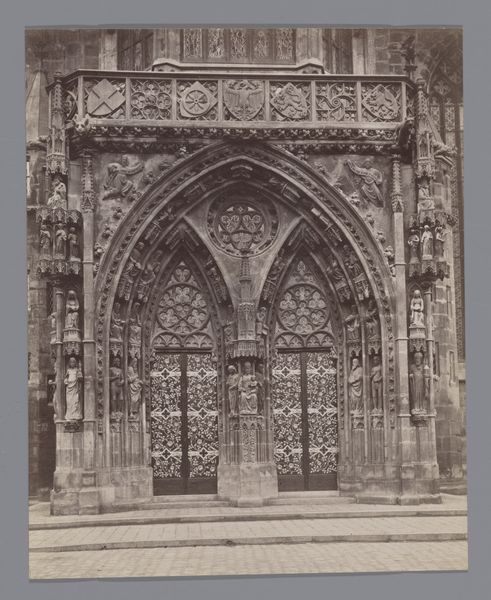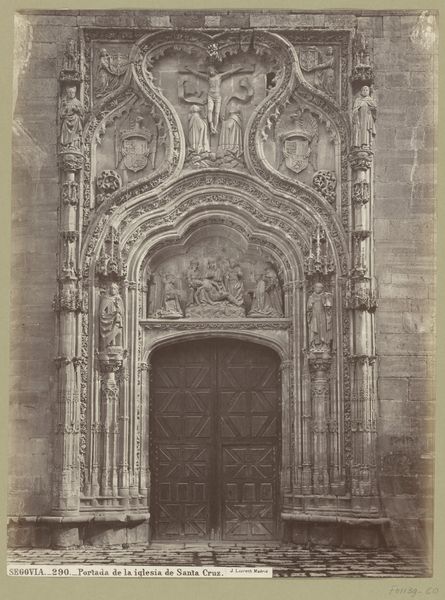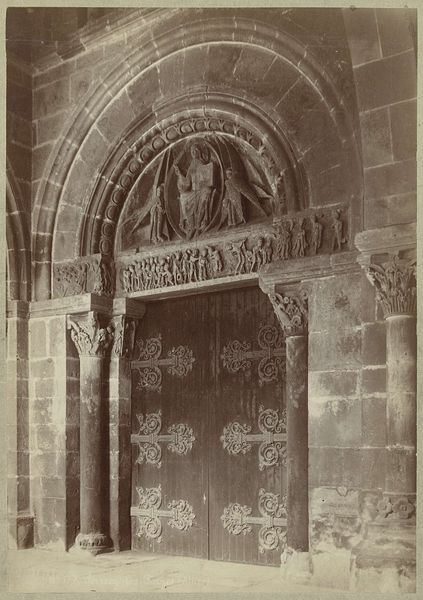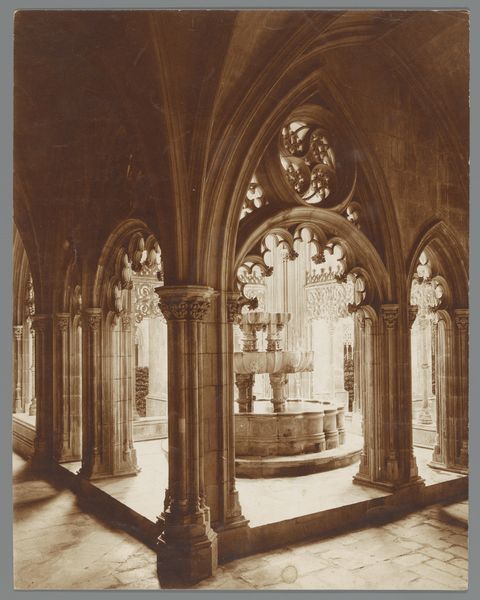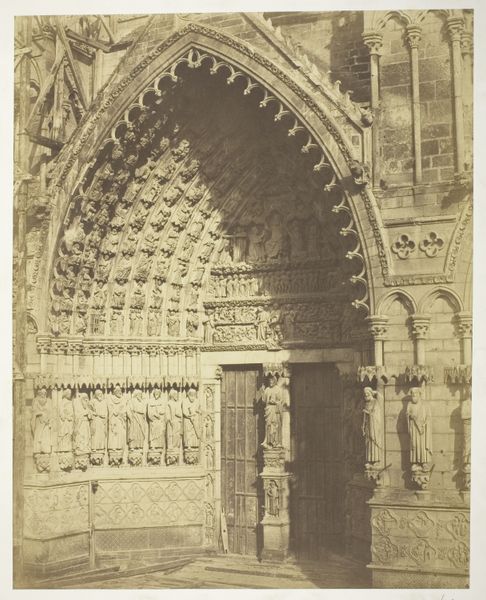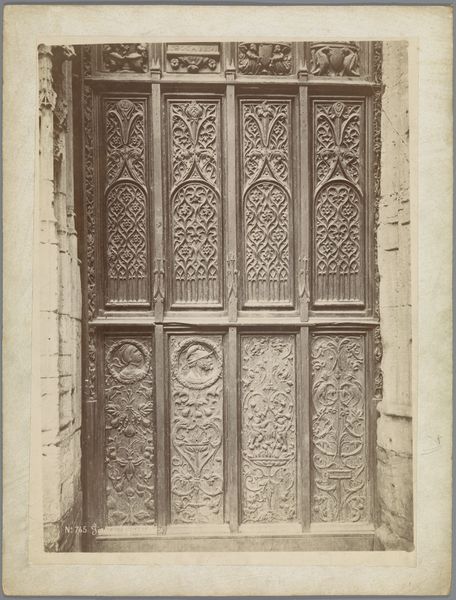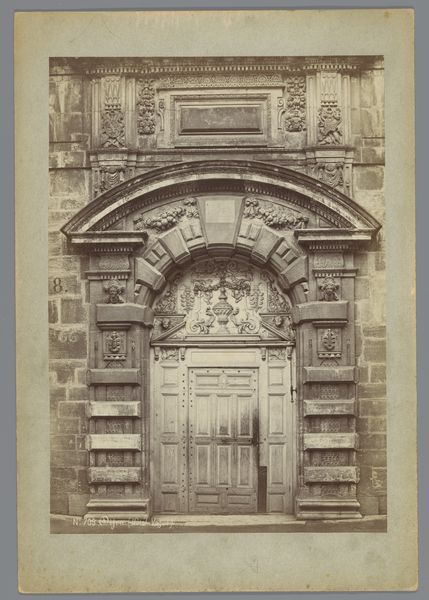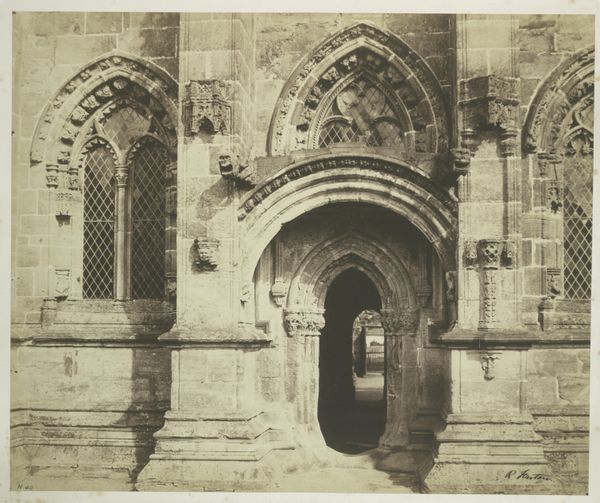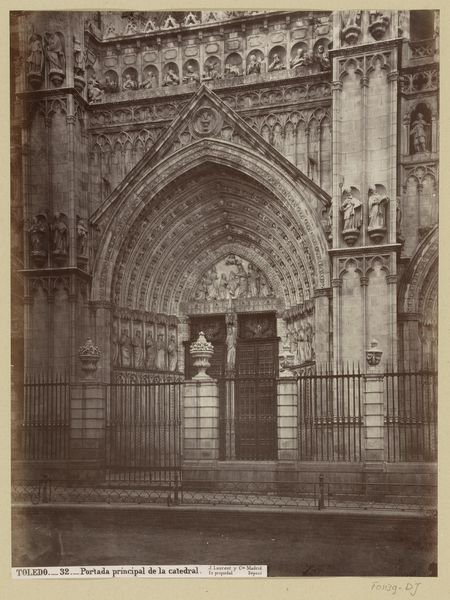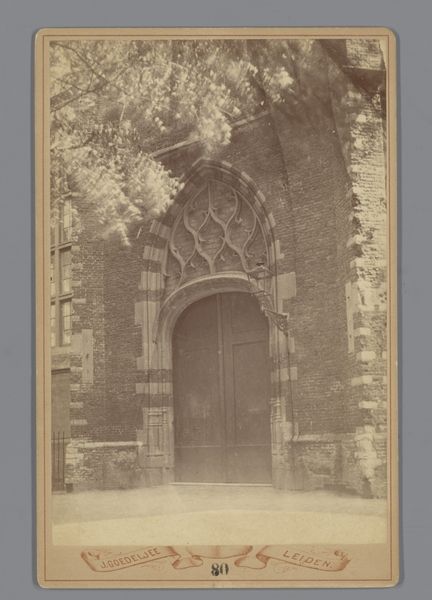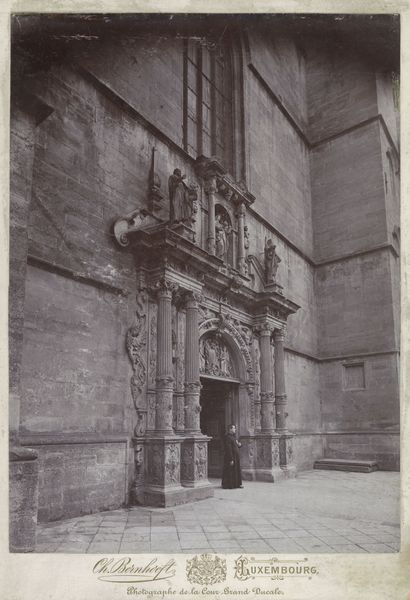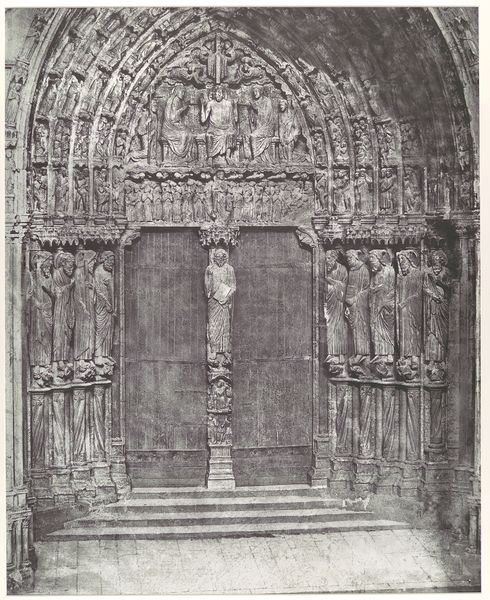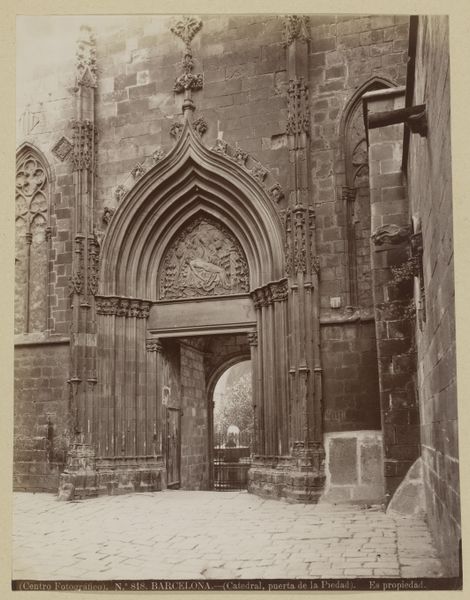
Dimensions: height 339 mm, width 249 mm
Copyright: Rijks Museum: Open Domain
Curator: This is a photographic print by Juan Laurent, taken between 1856 and 1863, of the "Puerta del claustro" – the cloister door – in the cathedral of Burgos. Editor: It’s a compelling image. The photograph renders the stone almost velvet in appearance. It's heavy with history, isn't it? Somber yet somehow uplifting. Curator: Indeed. Laurent, working in Spain during this period, was instrumental in documenting its architectural heritage through photography. Consider how photography was used to classify monuments worthy of conservation, contributing to national narratives. What meanings are projected onto these medieval monuments? Editor: I think immediately about the Church and its impact. But it makes me question: What does it mean to view the architectural detail and the carvings, to essentially freeze them in time? Curator: Laurent's images catered to a growing interest in Gothic and Medieval art and architecture, fueled by Romanticism and nationalism. Think about Viollet-le-Duc and his efforts to codify Medieval architecture. The photograph also acts as a sort of souvenir. How many people got to actually travel and experience gothic architecture and medieval carvings? These photographs opened up the gothic to a broader population. Editor: It speaks to the act of visual preservation, one that continues even now. The very act of viewing it now through a digitized image brings questions of ownership to the fore, too. In some ways, a photograph is as heavy as any form of power. Who decided this view and how is it then passed down to viewers and spectators? Curator: Exactly! Laurent’s works existed within networks of power, tourism, art history, and national identity. I find the almost clinical rendering fascinating. But one question remains: To whom do these monuments truly belong? Editor: A really complicated and multifaceted relationship. Looking closely makes one understand the complex layering and its echoes through today. So much of visual culture relies on who frames it, and how. Curator: Precisely. Perhaps the best we can do is acknowledge the forces shaping what we see. Editor: A solid starting point. Now, if you’ll excuse me, I'm keen to explore the cathedral’s interior a little further!
Comments
No comments
Be the first to comment and join the conversation on the ultimate creative platform.
